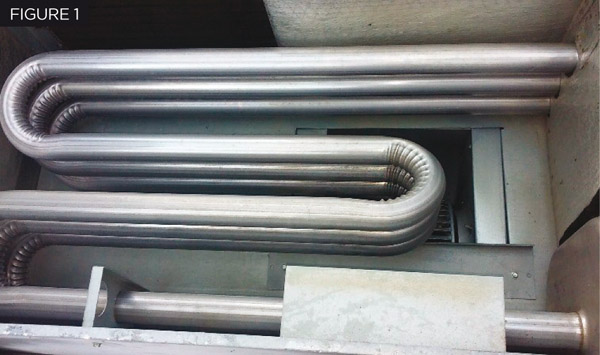It's hard to believe, but winter is just around the corner, and with it comes a new wave of HVAC claims. A common failure that aging HVAC systems suffer in fall and winter months is the breakdown of the heat exchanger due to thermal fatigue. To some degree, all metals that are repeatedly heated and cooled are subject to thermal fatigue, a cyclic stress that weakens the metal to an eventual point of failure. The degree to which metals are affected by thermal fatigue includes such stressors as: How often the metal heats and cools, how quickly the temperature of the metal changes, and the composition of the metal. When metal fails due to thermal fatigue, it most often occurs when the metal is hot, and presents itself in the form of a crack, which grows and deepens over time.
One HVAC component particularly susceptible to thermal fatigue is the system's heat exchanger. These are found in every gas- or oil-fired split system or packaged unit application, and they provide an efficient method of transferring the heat created by the burners to the supply air, while segregating the combustion gasses from the air itself. As seen in Figure 1, the typical heat exchanger comprises several metal tubes wrapped in a serpentine fashion that are connected on one end with the system's burners and combustion chamber, and on the other end to a vent or exhaust flue. As the supply air is pushed by the blower across the heat exchanger tubes, the heat transfers away from the heat exchanger to the passing air, following the second law of thermodynamics.

Want to continue reading?
Become a Free PropertyCasualty360 Digital Reader
Your access to unlimited PropertyCasualty360 content isn’t changing.
Once you are an ALM digital member, you’ll receive:
- All PropertyCasualty360.com news coverage, best practices, and in-depth analysis.
- Educational webcasts, resources from industry leaders, and informative newsletters.
- Other award-winning websites including BenefitsPRO.com and ThinkAdvisor.com.
Already have an account? Sign In
© 2024 ALM Global, LLC, All Rights Reserved. Request academic re-use from www.copyright.com. All other uses, submit a request to [email protected]. For more information visit Asset & Logo Licensing.








